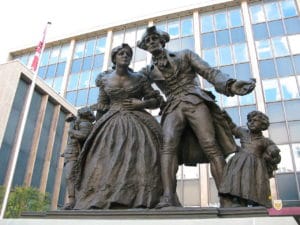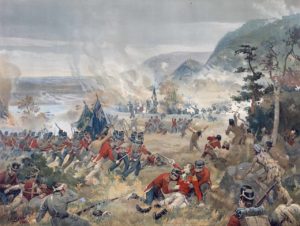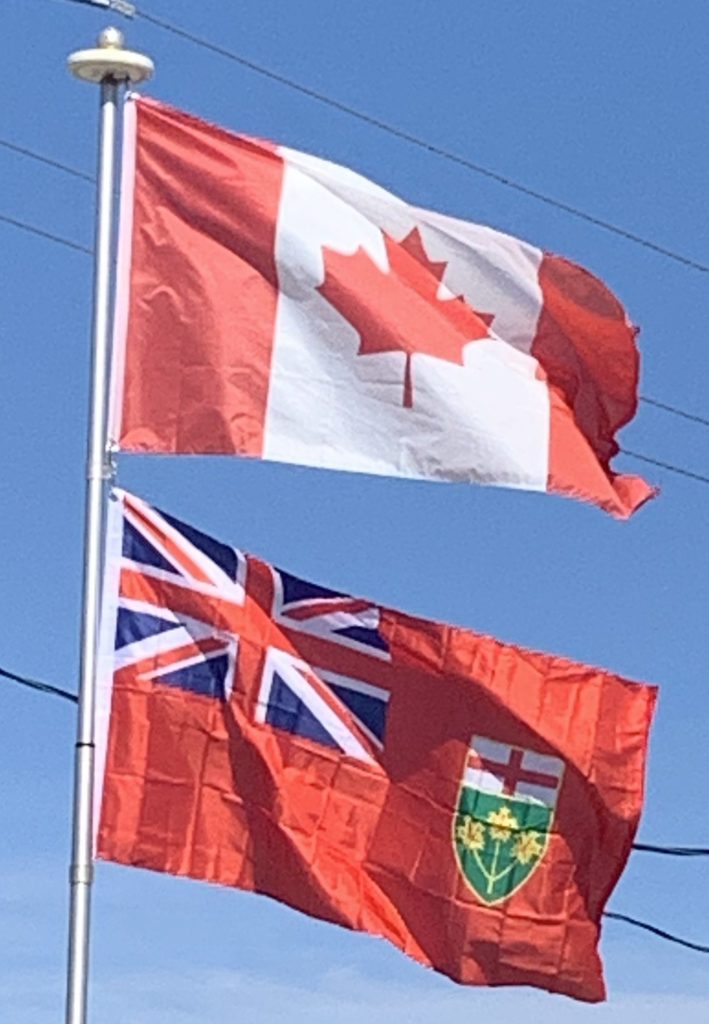
The population of Canada west of the St. Lawrence-Ottawa River confluence substantially increased during this period, a fact recognized by the Constitutional Act of 1791, which split Quebec into the Canadas: Upper Canada southwest of the St. Lawrence-Ottawa River confluence, and Lower Canada east of it. John Graves Simcoe was appointed Upper Canada’s first Lieutenant governor in 1793.
Upper Canada:
American troops in the War of 1812 invaded Upper Canada across the Niagara River and the Detroit River, but were defeated and pushed back by the British, Canadian fencibles and militias, and First Nations warriors. However, the Americans eventually gained control of Lake Erie and Lake Ontario. The 1813 Battle of York saw American troops defeat the garrison at the Upper Canada capital of York. The Americans looted the town and burned the Upper Canada Parliament Buildings during their brief occupation. The British would burn the American capital of Washington, D.C. in 1814.
After the War of 1812, relative stability allowed for increasing numbers of immigrants to arrive from Europe rather than from the United States. As was the case in the previous decades, this immigration shift was encouraged by the colonial leaders. Despite affordable and often free land, many arriving newcomers, mostly from Britain and Ireland, found frontier life with the harsh climate difficult, and some of those with the means eventually returned home or went south. However, population growth far exceeded emigration in the following decades. It was a mostly agrarian-based society, but canal projects and a new network of plank roads spurred greater trade within the colony and with the United States, thereby improving previously damaged relations over time.

Meanwhile, Ontario’s numerous waterways aided travel and transportation into the interior and supplied water power for development. As the population increased, so did the industries and transportation networks, which in turn led to further development. By the end of the century, Ontario vied with Quebec as the nation’s leader in terms of growth in population, industry, arts and communications.
Unrest in the colony began to chafe against the aristocratic Family Compact who governed while benefiting economically from the region’s resources, and who did not allow elected bodies power. This resentment spurred republican ideals and sowed the seeds for early Canadian nationalism. Accordingly, rebellion in favor of responsible government rose in both regions; Louis-Joseph Papineau led the Lower Canada Rebellion and William Lyon Mackenzie, first Toronto mayor, led the Upper Canada Rebellion. In Upper Canada, the rebellion was quickly a failure. William Lyon Mackenzie escaped to the United States, where he declared the Republic of Canada on Navy Island on the Niagara River.
Canada West:
Although both rebellions were put down in short order, the British government sent Lord Durham to investigate the causes. He recommended self-government be granted and Lower and Upper Canada be re-joined in an attempt to assimilate the French Canadians. Accordingly, the two colonies were merged into the Province of Canada by the Act of Union 1840, with the capital at Kingston, and Upper Canada becoming known as Canada West. Parliamentary self-government was granted in 1848. There were heavy waves of immigration in the 1840s, and the population of Canada West more than doubled by 1851 over the previous decade. As a result, for the first time, the English-speaking population of Canada West surpassed the French-speaking population of Canada East, tilting the representative balance of power.
